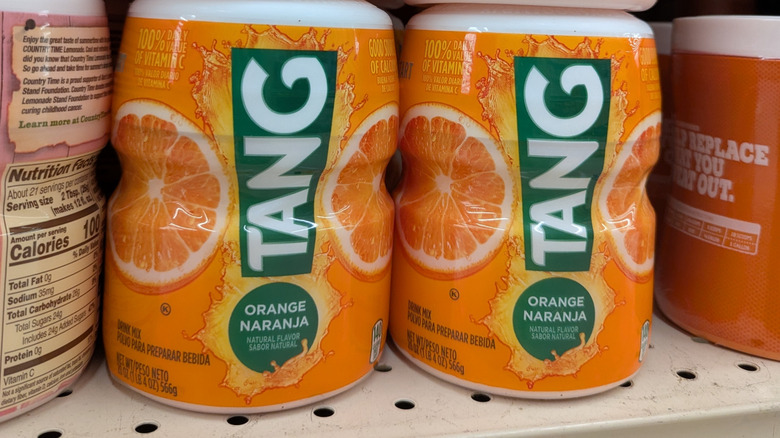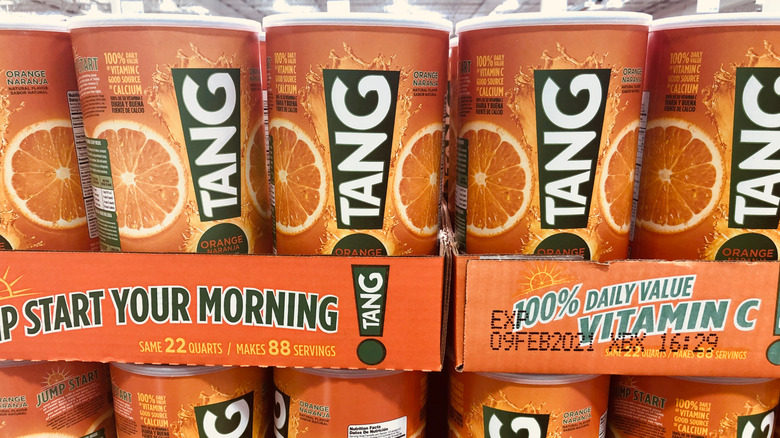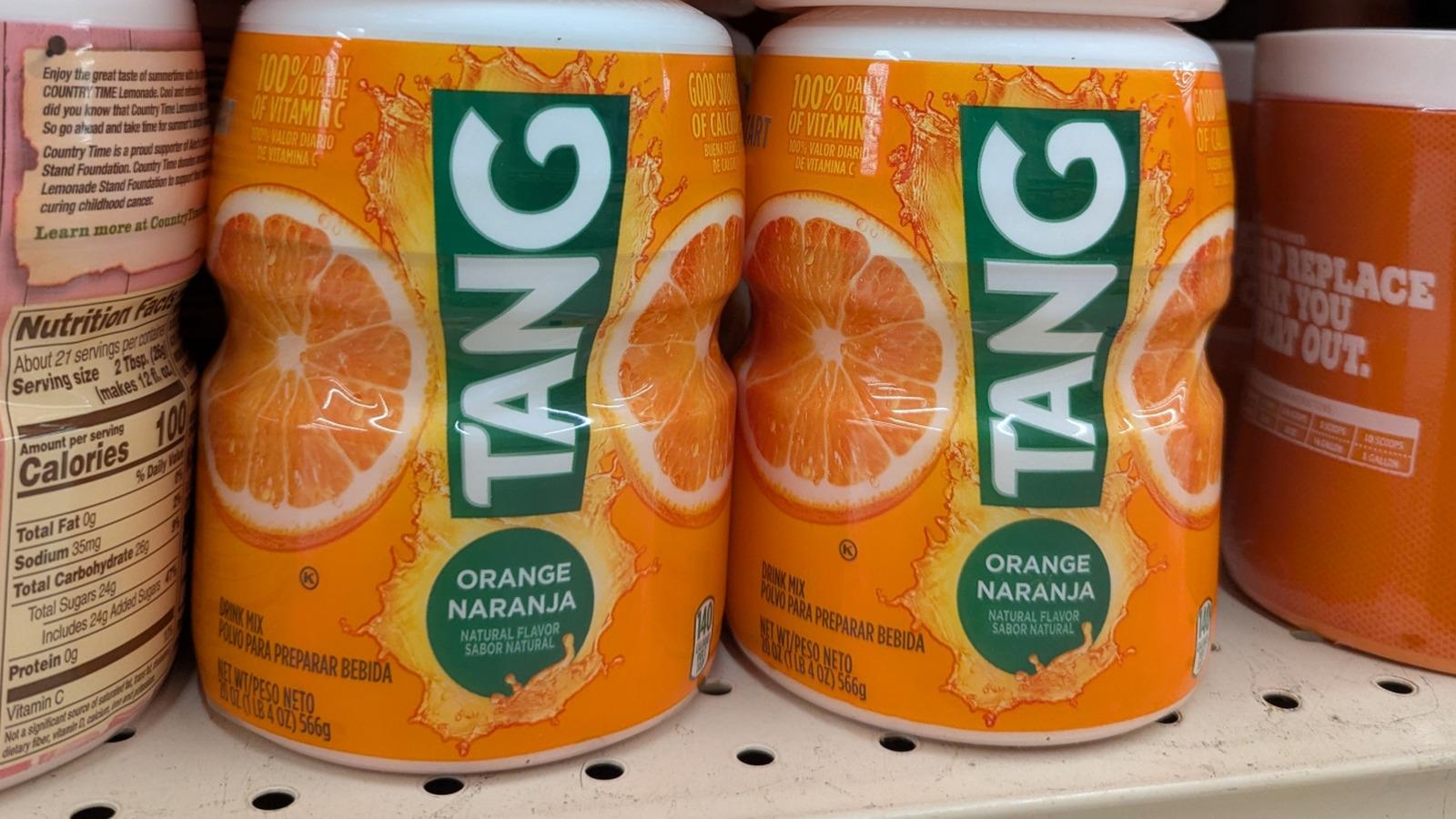
PJ McDonnell/Shutterstock
Food brands come and go, rising or falling in popularity as consumer tastes change. However, this can often leave shoppers wondering what happened to longtime standbys that suddenly seem far less common after decades on the shelves. An excellent example of this is Tang drink mix. Although it might be less prominent than it once was, it's still a widely available product in the United States and worldwide.
Grocery stores and supermarkets across the country stock the powdered orange-flavored drink mix, typically selling the familiar 20-ounce plastic containers for just a few dollars. Even those without access to a store that carries Tang can purchase it online via Amazon and other internet food sellers.
Still, it's hard to argue it hasn't seen a drop in public consciousness in America over its nearly seven-decade existence. That's especially noticeable since its heyday when it was the drink of choice for NASA astronauts in the 1960s and 1970s. Tang even sponsored TV coverage of the first manned flight around the moon. Yet, even then, it wasn't a universally beloved beverage. (Just ask astronaut Buzz Aldrin what he thinks about Tang.)
International success for an American classic

melissamn/Shutterstock
With a literally out-of-this-world history, it should be no surprise that Tang has also spread in popularity across the globe. More than 30 countries, particularly in Asia, Latin America, and the Middle East, enjoy the drink, with Brazil, Argentina, and the Philippines as its three largest markets. Aside from the familiar orange flavor, Tang is also available in other varieties, depending on local tastes. Tang holds a unique position in the Middle East, where it's a common part of Ramadan meals for many families. More than half of Tang sales in the region each year happen in the weeks around this period.
Even if the proliferation of fresh juices, sodas, and energy drinks has pushed Tang out of its once-prominent place in the beverage landscape, innovative home cooks have also found alternative uses for the vibrantly flavored powder, including Tang Creamsicle pies and Tang popsicles. It can even serve as the secret ingredient for tangier chicken wings or other dry-rub preparations.



